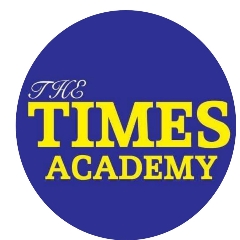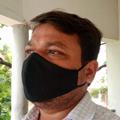Question 2 :
A wire is stretched to double its length. The strain is :
Question 3 :
The property of metals which allows them to be drawn into wires is known as :<br/>
Question 4 :
If Poisson's ratio $\sigma$ for a material is $-\dfrac {1}{2}$, then the material is
Question 5 :
A material has Poisson's ratio $0.5$. if a uniform rod of it suffers a longitudinal strain of $2\times {10}^{3}$, then the percentage change in volume is
Question 6 :
Assertion: Strain is a unitless quantity.
Reason: Strain is equivalent to force
Question 7 :
The temperature of a wire is doubled. The Young's modulus of elasticity will ?
Question 9 :
Let ${Y}_{S}$ and ${Y}_{A}$ represent Young's modulus for steel and aluminium respectively It is said that steel is more elastic than aluminium. Therefore, it follows that
Question 10 :
The Young's modulus of the material of the wire of length $L$ and radius $r$ is $Y{ N }/{ { m }^{ 2 } }$. If the length is reduced to ${ L }/{ 2 }$ and radius ${ r }/{ 2 }$, the Young's modulus will be:
Question 11 :
Two wires A and B of the same dimensions are under loads of $4$ and $5.5 kg$ respectively. The ratio of Young's modulii of the materials of the wires for the same elongation is:
Question 12 :
The area of cross-section of a steel wire $\left( Y=2.0\times { 10 }^{ 11 }{ N }/{ { m }^{ 2 } } \right)$ is $0.1 { cm }^{ 2 }$. The force required to double its length will be :
Question 13 :
A metallic ring of radius 'r', cross sectional area 'A' is fitted into a wooden circular disk of radius 'R' (R > r). If the Young's modulus of the material of the ring is 'Y', the force with which the metal ring expands is :<br/>
Question 15 :
When a sphere of radius $2 cm$ is suspended at the end of a wire, elongation is $'e$'. When the same wire is loaded with a sphere of radius $3cm$ and made of the same material, the elongation would be :
Question 17 :
The Young's modulus of a wire is $Y$ If the energy per unit volume is $E$ then the strain will be<br><br>
Question 18 :
Assuming that shear stress of base of a mountain is equal to force per unit area to its weight, calculate the maximum possible height of a mountain on the earth if breaking stress of a typical rock is $30\times10^{7}Nm^{-2}$ and specific gravity is $3\times 10^3 kg/m^3$.<br>
Question 19 :
One end of a slack wire (Youngs modulus $Y$, length $L$ and cross -sectional area A) is clamped to a rigid wall and the other end to a block (mass m) which rests on a smooth horizontal plane. The block is set in motion with a speed v. What is the maximum distance the block will travel after the wire becomes taut?<br>
Question 20 :
When a tension $F$ is applied, the elongation produced in uniform wire of length $L$, radius $r$ is $e$. When tension $2F$ is applied, the elongation produced in another uniform wire of length $2L$ and radius $2r$ made of same material is:
Question 21 :
Work done on stretching a rubber will be stored in it as :
Question 22 :
When the load on a wire is increasing slowly from $2$ kg to $4$ kg, the elongation increases from $0.6$ mm to $1$ mm. The work done during this extension of the wire is $(g=10 m/s^2)$.
Question 23 :
A wire extends by 'l' on the application of load 'mg'. Then, the energy stored in it is :
Question 24 :
One end of a string of length L and cross-sectional area A is fixed to a support and the other end is fixed to a bob of mass m. The bob is revolved in a horizontal circle of radius r, with an angular velocity $\omega $, such that the string makes an angle $\theta $ with the vertical. The increase $\Delta L$ in length of the string is<br>
Question 25 :
For silver, Young's modulus is $7.25\times10^{10} Nm^{-2}$ and Bulk modulus is $11\times10^{10} Nm^{-2}$. The Poisson's ratio will be:<br/>
Question 26 :
Consider the following two statements A and B and identify the correct answer .<br>A) A metal wire held vertically is longer than when it placed on a horizontal table.<br>B) Due to its own weight, some elongation is produced when it is held vertically.
Question 27 :
The theoretical limits of poisson's ratio lies between -1 to 0.5 because
Question 28 :
A wire is stretched through $1 mm$ by certain load. The extension produced in the wire of same material with double the length and radius will be<br/>
Question 29 :
The compressibility of water $5\times10^{10}m^{2}N^{-1}$ The decrease in volume of $100\,ml$ of water when subjected to a pressure of $15\,MPa$:
Question 30 :
There are two wires of same material and same length while the diameter of second wire is two times the diameter of first wire, then the ratio of extension produced in the wires by applying same load will be
Question 31 :
A metal wire of length L, area of cross section A and Young's modulus Y is stretched by a variable force F such that F is always slightly greater than the elastic forces of resistance in the wire. Then the elongation of the wire is $l$.<br>
Question 32 :
A cube of sponge rubber with edge length 5 cm has a force of 2 N applied horizontally to the top face (parallel to an edge) while the bottom face is held fixed. If the top face is displaced horizontally through a distance of 1 mm, find the shear modulus for the sponge rubber.
Question 33 :
In a Young's double slit experiment with sodium light, slits are 0.589 m apart. The angular separation of the maximum from the central maximum will be (given $\lambda =589$nm,):
Question 34 :
The shear modulus for a metal is 50000 MPa. Suppose that a shear force of 200 N is applied to the upper surface of a cube of this metal that is 3.0 cm on each edge. How far will the top surface be displaced?
Question 35 :
A mass m is hanging from a wire of cross sectional are A and length L. Y is young's modulus of wire. An external force F is applied on he wire which is then slowly further pulled down by $\triangle x$ from its equilibrium position. Find the work done by the force F that the wire exerts on the mass:
Question 36 :
A steel rope has length $L$, area of cross-section $A$, Young's modulus $Y$. [$Density = d$]. If the steel rope is vertical and moving with the force acting vertically up at the upper end, find the strain at a point $\displaystyle \frac{L}{3}$ from lower end.
Question 37 :
The length of a wire increases by $8mm$ when a weight of $5kg$ is suspended from it. If other things remain the same but the radius of the wire is doubled, what will be the increase in its length?
Question 38 :
A ball of radius <i>R </i>and with bulk modulus of elasticity <i>K </i>is kept in a liquid inside a cylindrical container. It is pressed by putting a mass <i>m </i>on a massless piston of cross-sectional area <i>A</i>, then the fractional decrease in the radius of ball will be<br>
Question 39 :
The Young's experiment is performed with the lights of blue $\left( \lambda =4360\mathring { A } \right) $ and green colour $\left( \lambda =5460\mathring { A } \right) ,$ if the distance of the ${ 4 }^{ th }$ fringe from the centre is x, then
Question 40 :
A metal wire of length $1\ m$ and cross-section area $2\ mm^{2}$ and Young's modulus of elasticity $Y=4\times 10^{11}\ N/m^{2}$ is stretched by $2\ mm$. Then


























































